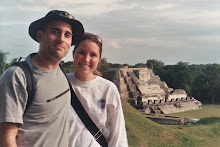 After a lack-luster breakfast we headed to the terminal of the InterIslander, a ferry that shuttles people from the North Island to the South Island through Cooks Straight. While leaving Wellington Harbor, we spotted the Miramar Peninsula, that has Mt. Crawford as its highest peak, Pencarrow Head, that is a rounded knoll with the oldest lighthouse (1859) in New Zealand located on it, and Karori Rip, where two tides meet making a very noticeable rip. For three hours we spent enjoying the view of Cooks Straight, which the Maori call Raukawakawa Moana.
After a lack-luster breakfast we headed to the terminal of the InterIslander, a ferry that shuttles people from the North Island to the South Island through Cooks Straight. While leaving Wellington Harbor, we spotted the Miramar Peninsula, that has Mt. Crawford as its highest peak, Pencarrow Head, that is a rounded knoll with the oldest lighthouse (1859) in New Zealand located on it, and Karori Rip, where two tides meet making a very noticeable rip. For three hours we spent enjoying the view of Cooks Straight, which the Maori call Raukawakawa Moana.  Once we got closer to the South Island, we were able to see Whekenui Bay, which according to legend, Tuhirangi guided Kupe to catch and kill a giant octopus. Entering into the Tory Channel, we spotted Cook's Lookout on Arapawa Island. There is a monument that commemorates the spot from which Captain Cook first sighted the stretch of water that bears his name.
Once we got closer to the South Island, we were able to see Whekenui Bay, which according to legend, Tuhirangi guided Kupe to catch and kill a giant octopus. Entering into the Tory Channel, we spotted Cook's Lookout on Arapawa Island. There is a monument that commemorates the spot from which Captain Cook first sighted the stretch of water that bears his name. Deep in Queen Charlotte Sound, we docked in Picton. Before heading to Oamaru, we did a quick stop to fix a flat tire on one of the vans and also a quick bathroom stop before heading out on a long journey to Oamaru.
Deep in Queen Charlotte Sound, we docked in Picton. Before heading to Oamaru, we did a quick stop to fix a flat tire on one of the vans and also a quick bathroom stop before heading out on a long journey to Oamaru.  The scenery changed from lush green vegetation to a brown landscape, expect where there was water drainage. This is known as the rain shadow side of the mountains. Due to oorgraphic lift, moisture is forced out of the clouds as the clouds ascend to cross of the mountain. This force causes rain to fall on the windward side of the mountain, hence the lush green vegetation we experienced on the North Island. On the leeward side of the mountain, the clouds are lacking moisture so there is a noticeably dry area referred to the rain shadow.
The scenery changed from lush green vegetation to a brown landscape, expect where there was water drainage. This is known as the rain shadow side of the mountains. Due to oorgraphic lift, moisture is forced out of the clouds as the clouds ascend to cross of the mountain. This force causes rain to fall on the windward side of the mountain, hence the lush green vegetation we experienced on the North Island. On the leeward side of the mountain, the clouds are lacking moisture so there is a noticeably dry area referred to the rain shadow. Several stops along the way for lunch and dinner along with a quick stop at the 45th parallel marker broke up the very long drive to Oamaru. Once in Oamaru, we got our room assignments at the Empire Hostel then headed back in the van to the Oamaru Blue Penguin Colony. We were unable to take pictures of the blue penguins since they were nesting and the flash would bother them. As we sat quietly watching the world's smallest penguins jump up the cliff from the ocean water, you could hear the calling form the chicks that were hidden in the grassy knoll on the cliff. The penguins come ashore in groups and will wait a few minutes before heading to their nests.
Several stops along the way for lunch and dinner along with a quick stop at the 45th parallel marker broke up the very long drive to Oamaru. Once in Oamaru, we got our room assignments at the Empire Hostel then headed back in the van to the Oamaru Blue Penguin Colony. We were unable to take pictures of the blue penguins since they were nesting and the flash would bother them. As we sat quietly watching the world's smallest penguins jump up the cliff from the ocean water, you could hear the calling form the chicks that were hidden in the grassy knoll on the cliff. The penguins come ashore in groups and will wait a few minutes before heading to their nests.Finally around midnight we headed off to bed.













